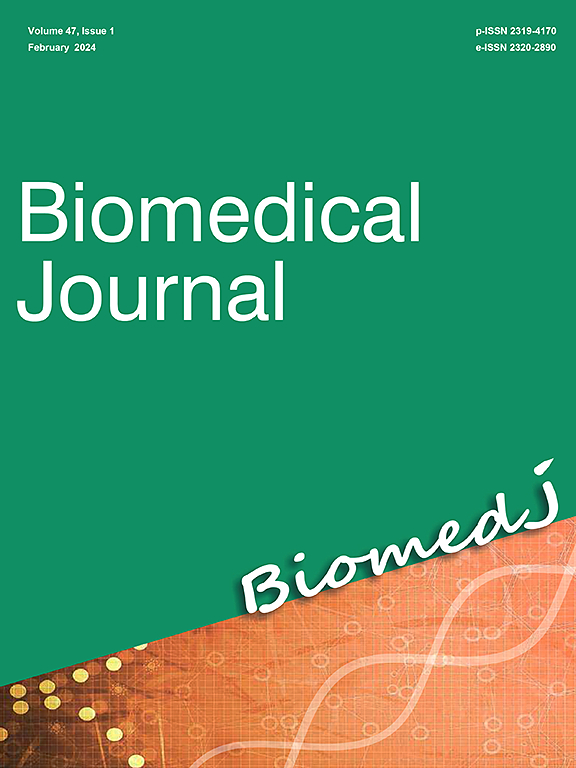Hepatocyte nuclear factor 4 located in different developmental stages of Schistosoma japonicum and involved in important metabolic pathways
IF 4.1
3区 医学
Q2 BIOCHEMISTRY & MOLECULAR BIOLOGY
引用次数: 0
Abstract
Background
Nuclear receptors (NRs) are vital for regulating gene expression in organisms. Hepatocyte nuclear factor 4 (HNF4), a class of NRs, participates in blood feeding and intestinal maintenance in schistosomes. However, there are limited researches on the molecular and functional characterization of HNF4 in Schistosoma japonicum (S. japonicum).
Methods
Highly specific polyclonal antibodies were generated to analyze the expression and tissue localization of S. japonicum HNF4 (SjHNF4). The potential biological functions of SjHNF4 were characterized by transcriptome and pull-down analyses. Subsequently, enrichment analysis was performed to identify the specific signaling pathways linked to SjHNF4.
Results
The SjHNF4 protein was expressed heterologously and purified successfully. High purity and high potency polyclonal antibodies were further prepared. The expression of SjHNF4 was higher in female compared to male worms at both transcriptional and protein levels. Female worms expressed SjHNF4 in their perithecium, reproductive system, and certain parts of the intestinal tissues. SjHNF4 was also detected in the perithecium of male worms, as well as in the head, body of cercariae, and eggs. Furthermore, our findings highlighted the potential role of SjHNF4 in blood feeding and its interaction with crucial pathways such as glucose metabolism, lipid metabolism, and nucleotide metabolism.
Conclusions
This study shed light on the localization of SjHNF4 in different life stages of S. japonicum, particularly associated with the female schistosomes. A strong correlation was observed between SjHNF4 and essential metabolic pathways. These findings laid a solid groundwork for the research on the relationship between NRs and schistosomes.

肝细胞核因子 4 位于日本血吸虫的不同发育阶段,参与重要的代谢途径。
核受体在生物体内的基因表达调控中起着至关重要的作用。肝细胞核因子4 (HNF4)是血吸虫体内参与血供和肠道维持的一类核因子。然而,对日本血吸虫(S. japonicum)中HNF4的分子和功能表征研究有限。方法制备高特异性的多克隆抗体,分析日本血吸虫HNF4 (SjHNF4)的表达和组织定位。SjHNF4的潜在生物学功能通过转录组和下拉分析进行了表征。随后,进行富集分析以确定与SjHNF4相关的特定信号通路。结果SjHNF4蛋白异种表达成功,纯化成功。进一步制备了高纯度、高效能的多克隆抗体。雌虫SjHNF4在转录和蛋白水平上的表达均高于雄虫。雌虫在其被周、生殖系统和肠道组织的某些部位表达SjHNF4。在雄虫的虫周、尾蚴的头、体和卵中也检测到SjHNF4。此外,我们的研究结果强调了SjHNF4在血液摄食中的潜在作用及其与葡萄糖代谢、脂质代谢和核苷酸代谢等关键途径的相互作用。结论本研究揭示了SjHNF4基因在日本血吸虫不同生命阶段的定位,特别是与雌性血吸虫相关。SjHNF4与必需代谢途径之间存在很强的相关性。这些发现为进一步研究NRs与血吸虫的关系奠定了坚实的基础。
本文章由计算机程序翻译,如有差异,请以英文原文为准。
求助全文
约1分钟内获得全文
求助全文
来源期刊

Biomedical Journal
Medicine-General Medicine
CiteScore
11.60
自引率
1.80%
发文量
128
审稿时长
42 days
期刊介绍:
Biomedical Journal publishes 6 peer-reviewed issues per year in all fields of clinical and biomedical sciences for an internationally diverse authorship. Unlike most open access journals, which are free to readers but not authors, Biomedical Journal does not charge for subscription, submission, processing or publication of manuscripts, nor for color reproduction of photographs.
Clinical studies, accounts of clinical trials, biomarker studies, and characterization of human pathogens are within the scope of the journal, as well as basic studies in model species such as Escherichia coli, Caenorhabditis elegans, Drosophila melanogaster, and Mus musculus revealing the function of molecules, cells, and tissues relevant for human health. However, articles on other species can be published if they contribute to our understanding of basic mechanisms of biology.
A highly-cited international editorial board assures timely publication of manuscripts. Reviews on recent progress in biomedical sciences are commissioned by the editors.
 求助内容:
求助内容: 应助结果提醒方式:
应助结果提醒方式:


